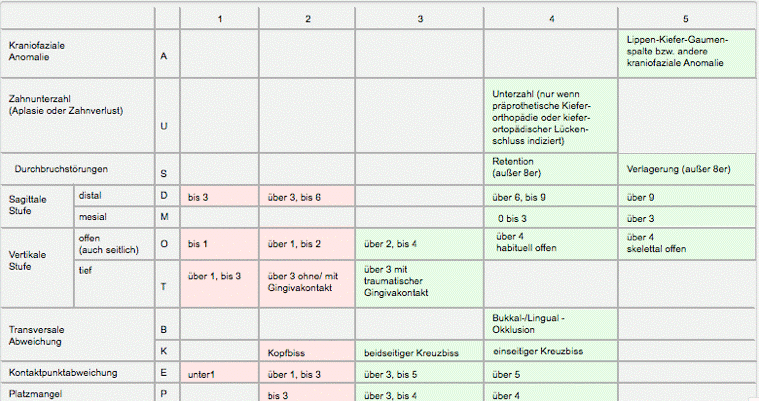The statutory health insurance pays for orthodontic treatment according to the 2004 orthodontic guidelines. The findings that entitle the patient to orthodontic treatment are regulated by the KIG system.
The Orthodontic Indication Groups (KIG) are a system that was introduced in Germany in 2002 to assess the need for treatment in the statutory health insurance. They are based on the IOTN, an assessment index that is used in Great Britain, which has been adopted practically unchanged. However, the Aesthetic Component (AC) of the IOTN, a visual scale with increasingly ugly dental photos to which an examined patient can be assigned, was not adopted.
The aim of the KIG was to exclude the very light and less extensive treatments from the SHI’s obligation to pay benefits and thus to save costs. Since it became apparent early on that the KIGs would fail to achieve this goal, in 2005 the allocation to categories E (contact point deviation) and T (deep bite) was made considerably more difficult.
Studies versus reality
A study by the University of Frankfurt (Glasl et al., 2006, https://link.springer.com/article/10.1007%2Fs00056-006-0615-8) has shown that 41.4% of children are entitled to orthodontic treatment at the time of school change according to the specifications of the KIG. The DMS 6 study on oral health in Germany published in 2023 found almost the same with 40.5% claim for orthodontic services. However, more than 60% of children are actually treated in Germany which indicates that many orthodontists do not take the KIG into account.
KIG – a reasonably fair system
Typical KIG limits are, for example, 6 mm overbite of the incisors and 3 mm deviation in case of lack of space and closely positioned teeth. In principle, the application of such an assessment standard is also desirable so that insurance premiums are not consumed for every aesthetic special wish. On the other hand, sometimes health-relevant or very unaesthetic findings are excluded by the KIG, while not all higher KIG classifications are associated with health impairment. Nevertheless, the KIGs are a reasonably fair system that can be lived with.
Orthodontic Indication Groups:
